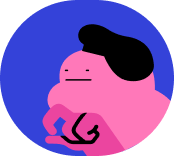Atoms
Cards (26)
- elementsubstance with only one type of atom
- compounda substance with two or more types of atoms, chemically bonded
- mixturea substance containing two or more types of atoms, not chemically bonded together
- separating mixtures - techniques
- Filtration
- crystallisation
- distillation (simple)
- chromatography
- History of the atomDemocritus - ancient Greek - indivisible - AtomosDalton - 1800 - atoms = tiny, hard, spheresJJ Thompson - 1897 - Plum Pudding - ball of positive charge with tiny negative charges randomly embedded into it - Electrons discoveredRutherford - gold foil experiment (alpha particle)- positively charged nucleusBohr - electrons orbited at fixed levels (shells)Rutherford - ProtonsChadwick - neutrons has no charge but have the same mass as protons
- Structure of AtomA) electrons on shellsB) nucleus - protons + neutrons
- Neutronscharge - 0mass - 1found - nucleus
- Protonscharge - +1mass - 1found - nucleusdetermine what type of element an atom is
- Electronscharge - -1mass - 1/2000found - shells
- mass numbernumber of protons and electrons (big number)
- atomic numbernumber of protons (small number)
- number of electrons = number of protons
- number of neutrons = mass number - atomic number
- periodic tablearranged in columns (how many electrons on outer shell) and rows (how many shells)
- metalsconduct electricity and heathave high melting pointsleft hand side of the tablemetallic bonding - they're strong, malleableshiny
- non-metalsinsulatorsright hand cornerdull lookingbrittlearen't always a solid at room templow density
- transition metalstypical metals - good conductors, dense, strong, shinymore then one ionoften colouredgood catalysts
- isotopessame number of protons but different number of neutrons (carbon)
- Group 0noble gaseshave 8 electrons on outer shell (except for He which only has 2)very stableunreactive - full outer shellsmelting point and boiling point gradually increases in temperature as you go downmonatomic (single atoms not bonded together)colourless + non-flamable
- Group 1Alkali metalssilvery solids that have been stored in oilvery reactivesoft - low densityLi, Na, K - less dense then waterone electron on the outer shellform ionic compounds with non-metalsas you go down - increases in reactivity, lower MP/BP, higher relative atomic mass
- Group 7Halogensnon - metals, coloured vapoursthey are in pairs - F2, Cl2, Br2, I27 electrons on their outer shellsHalide - halogen + metalas you go down - less reactive, higher MP/BP, higher relative atomic mass
- Fluorinevery reactivepoisonousyellow gas
- Chlorinefairly reactivepoisonousdense green gas
- Brominedensepoisonousred-brown volatile liquid (easily evaporates)
- Iodinedark grey crystalline or purple vapour
- Group 1 metals reacting with waterwhat you see - fizzing, flame (potassium = lilac) , floating,
